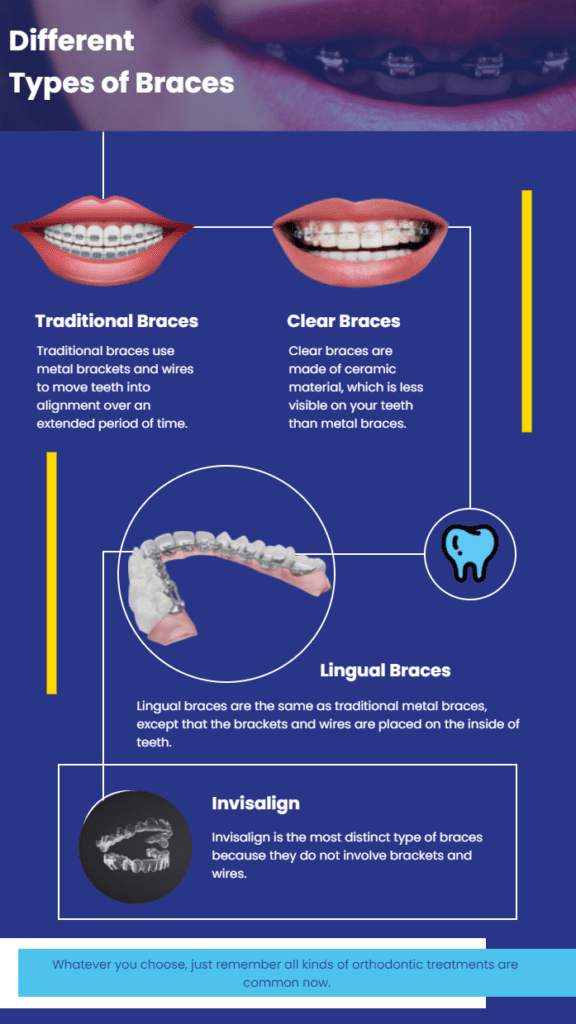Choosing the most effective Cumming Orthodontics for Effective Braces and Aligners Solutions
Choosing the most effective Cumming Orthodontics for Effective Braces and Aligners Solutions
Blog Article
Comprehensive Overview to Orthodontics Procedures for Correcting Oral Imbalances
In the realm of orthodontics, the journey to accomplishing a completely straightened smile entails a myriad of procedures customized to remedy oral imbalances. From typical dental braces to unseen aligners and also medical alternatives, the area of orthodontics supplies a variety of services to deal with differing levels of oral irregularities. Recognizing the complexities of each treatment, including their devices, benefits, and prospective disadvantages, is important in making notified decisions about one's orthodontic treatment. As we navigate with the extensive guide to orthodontic procedures for correcting dental imbalances, the complex information of each method will certainly unfold, clarifying the course toward a unified and functional dental positioning.
Orthodontic Procedures Introduction

Along with conventional braces and clear aligners, orthodontists might also recommend various other interventions like headwear, palatal expanders, or retainers to resolve particular alignment issues (invisalign). These treatments are tailored per individual's unique needs and may entail a combination of treatments to accomplish the wanted outcomes. Routine adjustments and surveillance are essential components of orthodontic treatment to ensure progression is on track and to make any required modifications along the road. By undergoing orthodontic treatments, patients can not just accomplish a straighter grin yet also improve their total dental wellness and function.
Typical Braces: Exactly How They Function
When thinking about orthodontic therapies for dental misalignments, traditional braces attract attention as a time-tested technique for fixing teeth placing. Standard braces are composed of brackets, cords, and bands that collaborate to apply continuous stress on the teeth, slowly moving them into the wanted positioning. The braces are affixed to the teeth utilizing a special adhesive, and the cables are threaded via the braces. By changing the stress of the cords, orthodontists can regulate the instructions and force applied to each tooth, assisting them right into proper placement gradually.
As stress is applied to the teeth via the braces, the bone bordering the teeth is reshaped to support the brand-new tooth positions. Patients will require routine modifications at the orthodontist's workplace to make sure the braces continue to use the correct pressure for effective teeth motion.
Undetectable Aligners: Benefits And Drawbacks
Invisible aligners use a very discreet and convenient alternative to conventional braces for dealing with oral misalignments. These clear, personalized trays are basically unseen when put on, making them an enticing choice for people seeking a much more visually pleasing orthodontic therapy. One of the main benefits of undetectable aligners is their removability, enabling simpler maintenance of dental health contrasted to typical braces. Patients can get rid of the aligners before consuming or brushing their teeth, minimizing the danger of food getting embeded the device and local pediatric dentist simplifying the cleaning procedure.

Surgical Orthodontic Options
Surgical interventions in orthodontics present feasible alternatives for resolving intricate dental misalignments that may not be successfully fixed through traditional orthodontic treatments. While standard braces and unseen aligners can fix lots of orthodontic issues, specific instances call for medical intervention to accomplish ideal outcomes. Surgical orthodontic alternatives are commonly click for info recommended for serious malocclusions, significant jaw inconsistencies, and situations where the underlying bone structure needs adjustment to attain proper placement.
One usual medical orthodontic procedure is orthognathic surgical treatment, which entails rearranging the jaws to deal with functional issues such as difficulty chewing or speaking. This surgery is often performed in partnership with an orthodontist who aids straighten the teeth before and after the procedure. Surgical orthodontics might likewise entail procedures to expose influenced teeth, get rid of excess gum cells, or improve the jawbone to create a more unified facial profile.
Before taking into consideration surgical orthodontic alternatives, individuals undertake a comprehensive examination to determine the necessity and prospective advantages of such interventions. invisalign. While surgical procedure might seem daunting, it can significantly boost both the feature and appearances of the smile in instances where standard orthodontic therapies drop short
Retainers and Post-Treatment Care

Post-treatment care includes adhering to the orthodontist's directions carefully. This may include proper oral hygiene methods, attending follow-up appointments, and using the retainers as suggested. Failure to follow post-treatment treatment directions can cause regression, where the teeth slowly return towards their original settings. Regular retainer wear, great oral hygiene, and normal dental examinations are vital for keeping the outcomes achieved via orthodontic surgical treatment and making certain the lasting stability of the corrected dental placement.
Final Thought
To conclude, orthodontic treatments use different options for fixing dental imbalances. Typical dental braces use metal braces and cables to shift teeth right into correct positioning. Unnoticeable aligners give an even more very discreet option yet may not appropriate for all situations. Surgical orthodontic options are offered for extra serious imbalances. Retainers are generally utilized post-treatment to keep the brand-new placement. In general, orthodontic procedures can efficiently boost oral wellness and aesthetic appearance.
As we navigate via the extensive overview to orthodontic procedures for correcting dental imbalances, the complex information of each technique will certainly unravel, dropping light on the path towards a unified and practical dental placement. - cumming orthodontics
One of the most usual orthodontic treatments is the usage of braces, which are composed of steel brackets and cables that use gentle stress to progressively shift teeth into the desired placement.When thinking about orthodontic therapies for oral misalignments, conventional braces stand out as a reliable technique for correcting teeth positioning. In addition, unnoticeable aligners might not be suitable for complicated orthodontic issues that call for more significant teeth activity, as they are usually recommended for light to modest instances. Retainers are customized orthodontic tools created to hold teeth in their fixed placements after the completion of orthodontic therapy.
Report this page